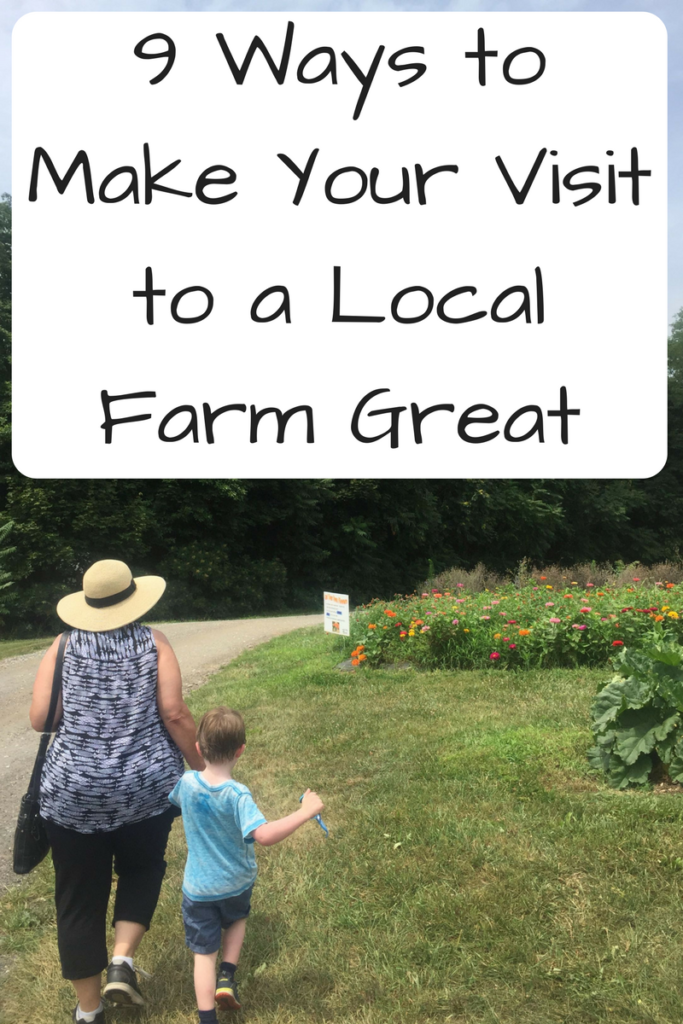
My toddler eyed the cow warily. What was this creature? Sure, it said moo, but this was so much larger than he expected! Seeing him back away, we didn’t push it. We knew he would have plenty of other opportunities to visit a local farm or two along the way.
Visiting a local farm is a great way to connect kids with their food, especially if you don’t have the ability to garden. They get to see how fruits and vegetables grow and experience real, live animals. That helps them appreciate the hard work of the people who grow their food and put more thought to where it comes from.
Plus, it’s really fun. Some of my favorite childhood memories are of picking giant blueberries and slurping strawberry smoothies at a local farm near our house.
We’re particularly fortunate because our county actually has a large agricultural reserve set aside just for farming. Since that incident, we’ve visited many farms. Here’s what we’ve learned in the process:
Consider the weather
Obviously, you don’t want to visit a farm when it’s raining or super cold. But heat and sun can be a major factor as well. Many farms have little shade and pick-your-own can be tiring, especially if you have to walk down to the fields. Picking berries, which requires leaning down with zero shade, is particularly bad on hot days.
Plan enough time for extra activities at the local farm
An increasing number of farms have agro-tourism aspects. Beyond pick-your-own, many have hay rides, facilities tours, corn mazes and even playgrounds. Be sure to check the farm’s website beforehand or call and factor time into your plans. It’s super frustrating to have to tell a kid that you don’t have time for a hay ride.
Bring cash
Along with the freebies, many farms also have food for sale or activities that cost extra like pumpkin cannons. Much of the time, they don’t take credit or debit cards. It’s disappointing to miss out on homemade ice cream or jam because you didn’t have cash.
Pack a picnic
While many places sell snacks, few sell enough food for a proper lunch. If they do, it’s absurdly expensive. In addition, many are quite a ways from the nearest town. The easiest bet is to pack your own picnic, even if it’s a simple as sandwiches.
Pick according to what you can both carry and use
When you’re picking larger fruits or vegetables, like apples, peaches or pumpkins, it’s very easy to pick way too much. Consider beforehand both what you can physically carry and what you can actually use in your kitchen. Do you have a dish in mind that uses a lot of the fruit, like pie, crumble, or jam? Do you actually have time in the following week to make it? Is it possible to store your haul in some other way, like freezing it? There’s nothing worse than produce you worked hard to pick going bad because you didn’t use it in time.
Bring hand sanitizer
Many farms, even those that specialize in fruits and vegetables, have animals on the premises. One of our local orchards has goats, chickens and even a llama! Of course, your kids will want to interact with them. Be sure you bring along some hand sanitizer so you can decontaminate them afterwards. Some farms have hand sanitizer dispensers right near the animals, but not all.
But don’t worry too much about germs
While hand sanitizer is great, don’t freak out if your kid gets up too close and personal with the animals. In fact, being exposed to animals at a young age can actually be healthy. Emerging research on the role of germs in our bodies suggests that not having enough exposure to germs – especially from animals – can be actively harmful. In fact, research shows that in many cases, kids who live on small farms with animals (not large-scale animal confinement facilities) are less likely to have asthma and the precursors to allergies. So if your kid does something really gross while on the farm, just repeat to yourself, “It’s good for the immune system. It’s good for the immune system.”
Realize that your kids may be afraid of the animals if they’ve never seen them in person
Meeting a farm animal in person is way different then reading about them in a book. They’re big, smelly, and frequently a little grumpy. To reduce anxiety, talk through expectations beforehand, letting kids know what they’re going to encounter. When you’re there, approach the animals slowly and never push a child who looks nervous. And of course, if the farm provides directions, always be sure to follow them! Getting bitten is a quick path to a terrible time.
Be prepared for some awkward conversations
Getting up close and personal with your food can lead to some difficult conversations. There’s always the possibility of shameless animals needing to spark the birds and bees talk, but seeing them is more likely to spark thoughts about eating habits. Some kids are so surprised when they see vegetables come from the ground that they refuse to eat them! But it’s more likely that you’ll have to deal with the reaction when a child may think about an animal ending up on their plate. It may be the first time they’ve really thought about where meat comes from. Depending on how the conversation goes, You may end up with a vegetarian in your house, which isn’t necessarily a bad thing. (In my opinion.)
These days, Sprout is both bigger and much more comfortable around animals. Bringing our kids to local farms has created a better understanding in them of the source of our food along with a lot of great memories.
To read about our adventures with farms, check out Apple Picking, Hay Bales and Llamas at Homestead Farm and Montgomery County Had Some Farms – EIEIO. Be sure to follow us on Facebook!